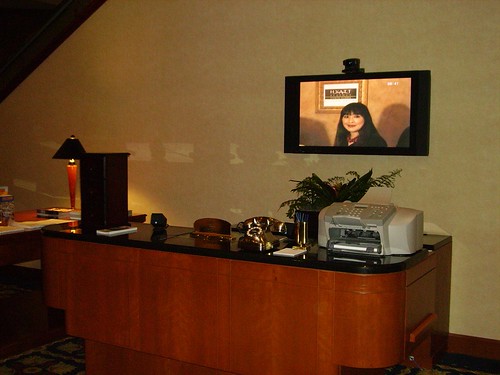Consumerist and BoingBoing are indicating that Nvidia may (note: speculation) be working with firm AEG to create faux online personnas to develop positive reputations in online communities to pitch Nvidia products. Consumerist’s unsubstantiated indictment:
“About a week ago, The Consumerist stumbled upon claims made by various gaming websites that graphics chip manufacturer Nvidia, in cooperation with the Arbuthnot Entertainment Group (AEG), had seeded various gaming and PC hardware enthusiast sites with pro-Nvidia shills. That is to say, that AEG would hire employees to create ‘personas’ in various gaming communities, slowly building up the trust of other members by frequent posting unrelated to Nvidia, to later cash in that trust with message board postings talking up the positive qualities of Nvidia’s products.”
Now, one of AEG’s self-proclaimed skills is in:
“Strategic seeding [of] viral assets to ensure they are spread far and wide”
Ok, fair enough. And this post posits that:
“AEG, on behalf of NVIDIA, monitors a number of public hardware enthusiast communities and forums, seeking out some of the more well-respected members of these communities, those that they feel will hold sway among their peers when it comes to discussing product purchase decisions and the like.
These individuals are then approached regarding their interest in joining NVIDIA’s community outreach programme. Those that register said interest are then provided with a free NVIDIA product (graphics cards generally speaking, although as NVIDIA has noted this campaign has been diversified into other product areas) in return for these users providing feedback to NVIDIA for the product they have been given, as well as hopefully evangelising the product to other members of their community. Thus, good word of mouth about the product is spread by a highly valued member of a community among his peers, who then take his sentiments on-board, spread them on to other communities, users, friends etc, and so on – The ‘good news’ spreads quickly, acting as a perfect form of viral marketing.”
If the process above is being followed, and true enthusiasts who happen to be key members of a community are being given samples of product, with no strings or expectations attached, that is good aggressive (and smart) marketing, and is above board. (The recipients do have an obligation, in my opinion, to disclose the freebies, however. One approach is the one that Nokia is following that is covered here, here, here and here.) Now, on the other hand, if shills are being compensated to talk up Nvidia in online forums without disclosing their interests or, even worse, are being compensated to create multiple personalities to astroturf the gaming world, that is an entirely different kettle of fish altogether, and reeks of the issues that have been covered previously in this space and over at Brand Autopsy.
Nvidia, however, horribly flubbed their first attempt to publicly address the situation. After some badgering, Consumerist has received the following email from Nvidia PR Director Derek Perez:
“Hey Joel.
Boy – read your article – you couldn’t have gotten it more wrong.
Do you really not know what AEG does? Did you go to their website? Do you understand their business?
Seems before you write an editorial article on this you would educate yourself.
AEG helps us to manage the online community – we engage with some NV fans to help educate people on the web.
They are NOT hired actors!
They are NOT “shils”!
Happy to answer more questions – but it seems as if you need to do some research first.
Cheers Derek”
This is certainly not the best piece of outreach that’s ever occurred. If Nvidia is NOT engaging in below-board practices, Nvidia would be better served by coming out with a flat, unambiguous statement to that effect. The Perez response is weak and defensive, and not at all what one would expect if they were trying to address the situation in a straightforward and truthful manner. Not good.
Neville, Shel, Steve…what would you advise Nvidia to do in this situation?
(Also of note: the AEG blog is silent on this at the current time.)
Update: Email conversation between Derek Perez and Thomas Hawk on the situation. Hawk:
“I just got off the phone with Derek Perez, Director of NVidia PR, according to Perez, while NVidia has in fact hired third party marketing firm Arbuthnot Entertainment Group (AEG) to market on their behalf, Perez has denied any allegations that either NVidia, or AEG on NVidia’s behalf, has paid money to individuals for posting positive marketing news about NVidia in forums. While Perez has confirmed that NVidia has in fact given hardware to individuals in the mainstream press as well as enthusiasts in online communities, they deny that any cash has been paid to individuals for promoting their products by them or AEG to the best of their knowledge.”












